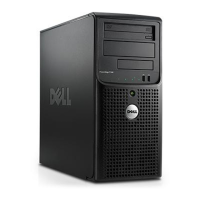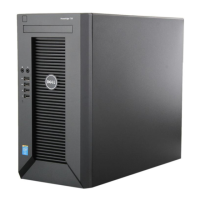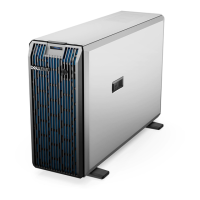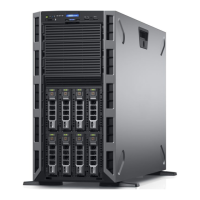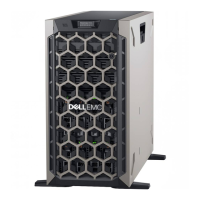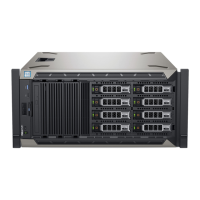Do you have a question about the Dell PowerEdge T100 and is the answer not in the manual?
Describes controls, indicators, and connectors on the system's front panel.
Describes controls, indicators, and connectors on the system's back panel.
Instructions on how to access the System Setup program by pressing the F2 key during startup.
Lists and describes the various configuration options available within the System Setup program.
Step-by-step instructions for safely opening the computer system for component access.
Step-by-step instructions for safely closing the computer system after component maintenance.
Covers installation guidelines, removal, and replacement of hard drives in the system.
Instructions for removing and installing various types of expansion cards.
Details memory module installation, guidelines, and upgrade kits.
Information on upgrading and replacing the system's microprocessor.
Procedures for removing and installing the system's power supply unit.
Instructions for removing and installing the system board.
Important safety precautions to follow before and during system servicing.
Procedures to diagnose and fix problems with the keyboard and mouse.
Steps to diagnose faulty memory modules or system board issues.
Steps to diagnose hard drive errors and recognition issues.
Diagnoses processor problems, system board issues, or missing heat sinks.
Introduces Dell's PowerEdge Diagnostics suite for hardware testing.
Instructions on how to initiate and run the system diagnostics from the utility partition.
Provides contact information and methods for obtaining technical support from Dell.
Describes controls, indicators, and connectors on the system's front panel.
Describes controls, indicators, and connectors on the system's back panel.
Instructions on how to access the System Setup program by pressing the F2 key during startup.
Lists and describes the various configuration options available within the System Setup program.
Step-by-step instructions for safely opening the computer system for component access.
Step-by-step instructions for safely closing the computer system after component maintenance.
Covers installation guidelines, removal, and replacement of hard drives in the system.
Instructions for removing and installing various types of expansion cards.
Details memory module installation, guidelines, and upgrade kits.
Information on upgrading and replacing the system's microprocessor.
Procedures for removing and installing the system's power supply unit.
Instructions for removing and installing the system board.
Important safety precautions to follow before and during system servicing.
Procedures to diagnose and fix problems with the keyboard and mouse.
Steps to diagnose faulty memory modules or system board issues.
Steps to diagnose hard drive errors and recognition issues.
Diagnoses processor problems, system board issues, or missing heat sinks.
Introduces Dell's PowerEdge Diagnostics suite for hardware testing.
Instructions on how to initiate and run the system diagnostics from the utility partition.
Provides contact information and methods for obtaining technical support from Dell.
| Form Factor | Tower |
|---|---|
| Chipset | Intel 3200 |
| Memory Slots | 4 |
| Processor | Intel Xeon 3000 series, Intel Core 2 Duo |
| Memory | Up to 8GB DDR2 |
| Storage | SATA |
| RAID Support | RAID 0, 1 |
| Network | Gigabit Ethernet |
| Expansion Slots | 1 PCIe x16, 1 PCIe x4, 1 PCI |
| Operating System Support | Microsoft Windows Server 2008, Microsoft Windows Server 2003, Red Hat Enterprise Linux, SUSE Linux Enterprise Server |
